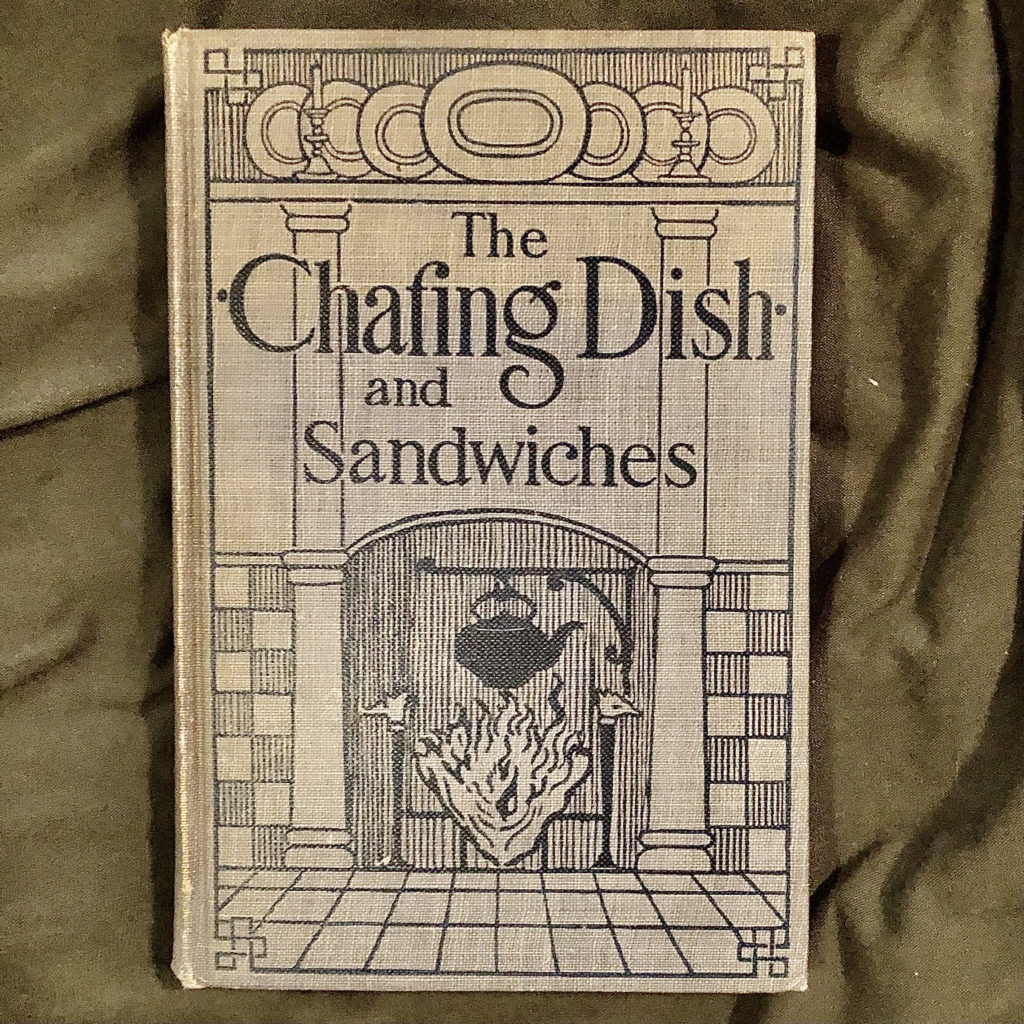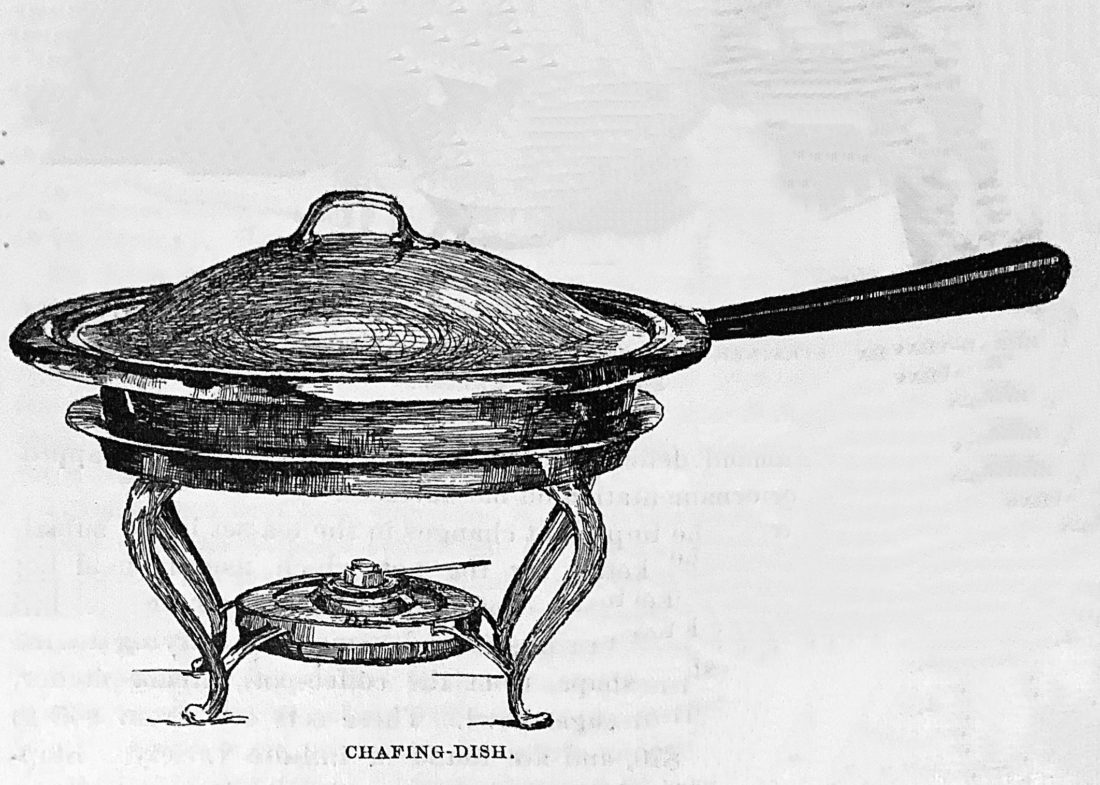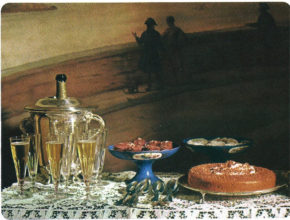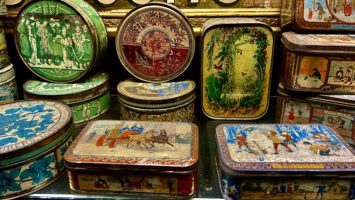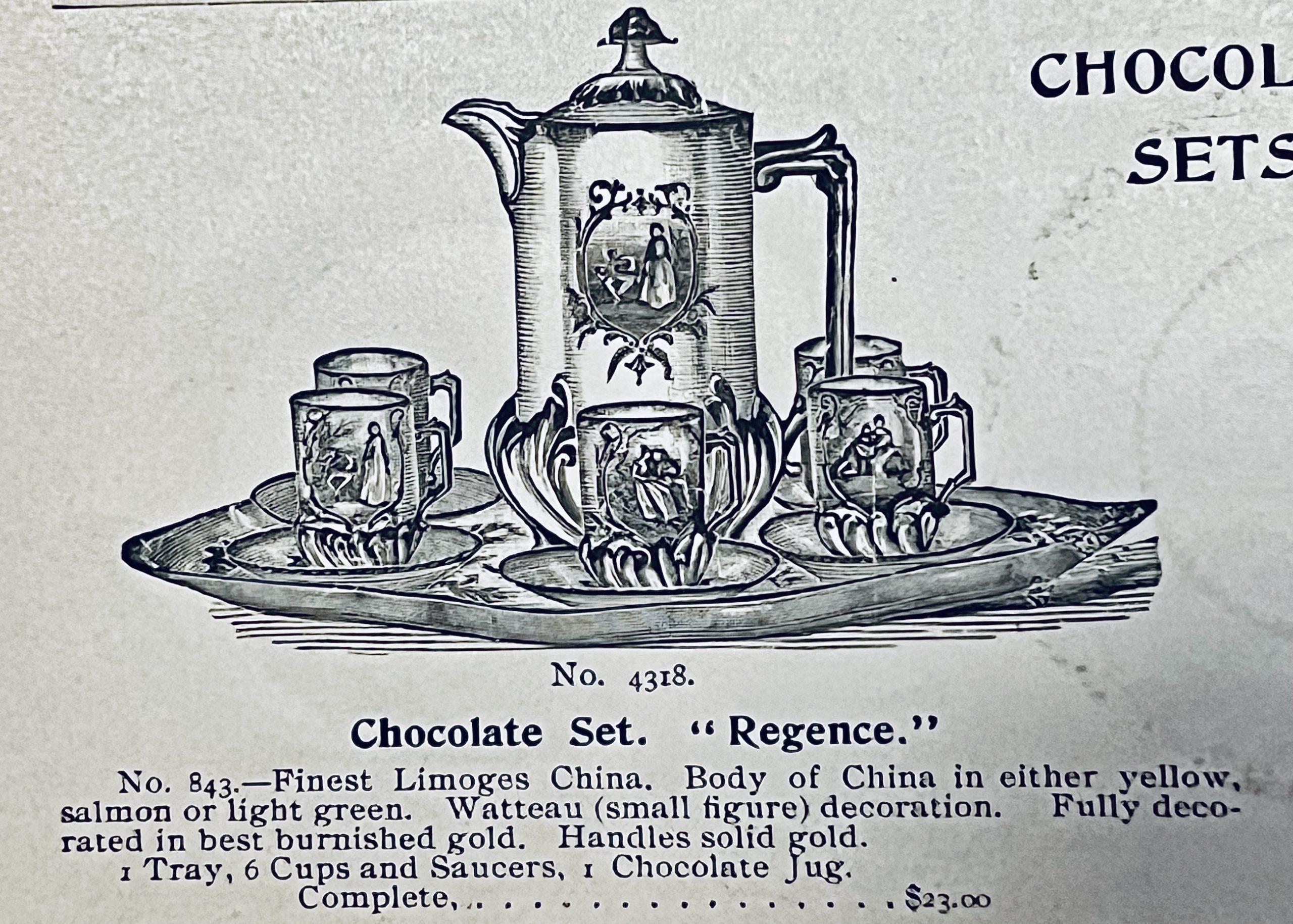“Chafing dish cookery was one of the earliest known branches of the culinary art, having been held in high repute from almost prehistoric times, although it has recently enjoyed a revival at the hands of our enterprising American cousins, who find that in a country where cooks, or needed servants of any sort, are at a premium, and the menage is too often reduced at a moment’s notice to the single-handed assistance of the Irish help, a chafing-dish, to aid in the preparation for dainty meals in the shortest possible space of time, proves itself, like the schoolboys’ famous definition of a lie, “a very ready help in time of trouble.”
The Lady’s Realm, article by Gwen Carson, Volume XIX, (1906)
How very English of Gwen to throw shade on the Irish help. Sheesh. In other respect, she’s right about the chafing dish’s long history, though the modern chafing-dish with water bath underneath is a late development. So, what is a chafing-dish exactly?
“The term chafing-dish refers to a domestic utensil of metal or earthenware for holding burning charcoal or other combustible material, whose purpose is to cook food or keep it hot at table.”
Some Types of Metal Chafing-Dish by J.M. Lewis. The Antiquaries Journal, (1973)
There, easy-peasy. The first chafing dishes were really braziers that a cooking dish could be placed on top of. Over time they came with a matching dish on top and then a water bath underneath to keep the food from burning.
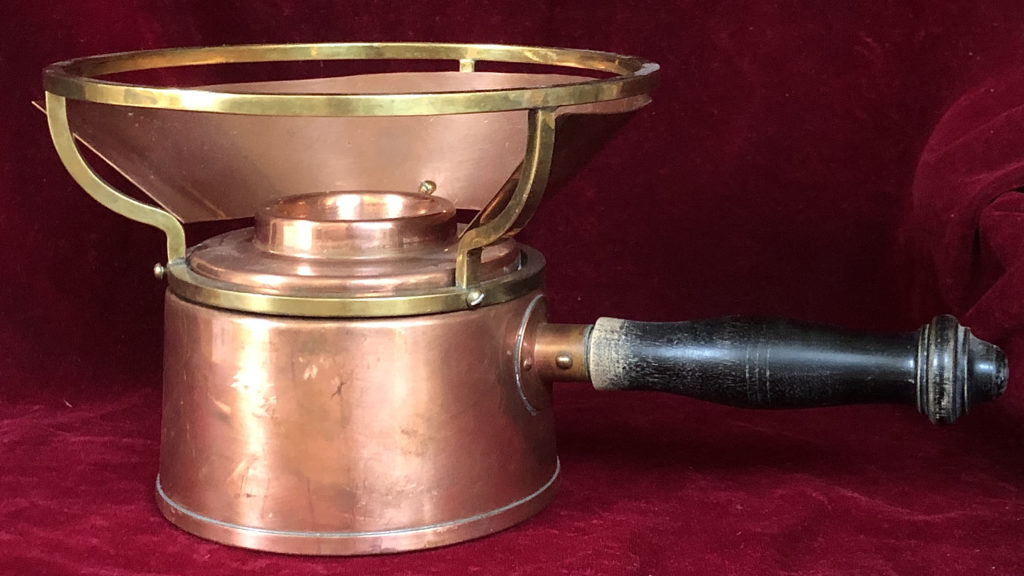
The Chafing Dish was always around in some form, but it really gained popularity in the late 19th century as an easy method for home cooks to prepare a meal on the help’s day off. It caught on first in the US but quickly crossed the pond as servants became harder to come by in the UK. By 1906 when Miss Carson was writing, the Sunday night dinner or tea by chafing-dish had become a common sight.
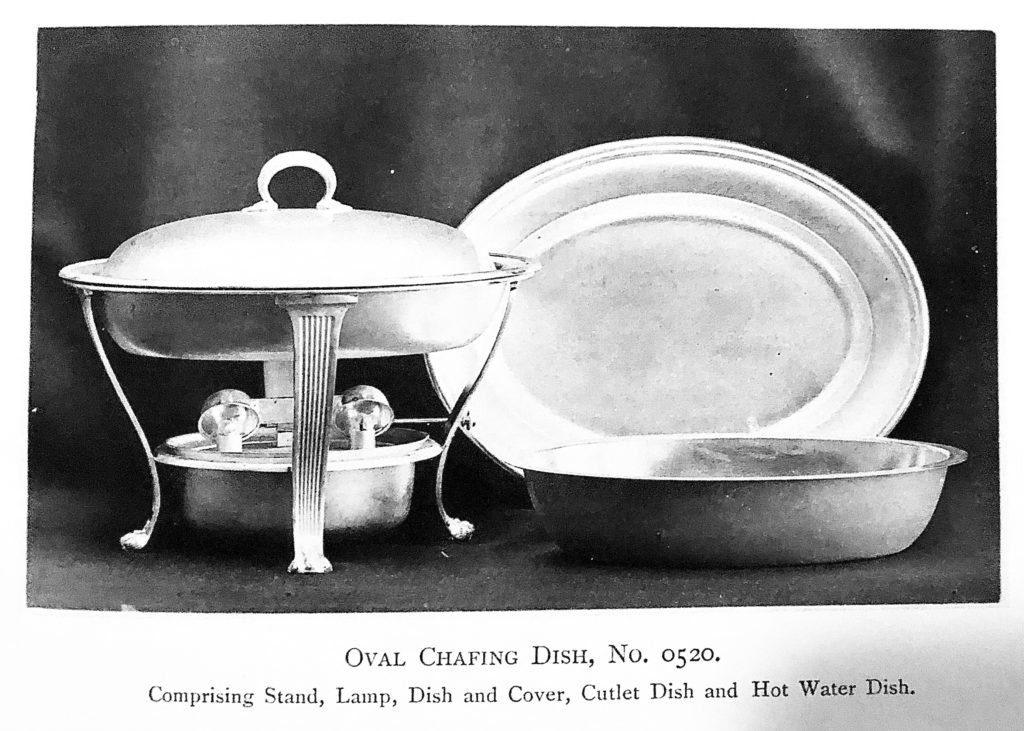
But Chafing dishes weren’t only for wives with few servants. In the late 1800’s they were marketed heavily to bachelors as a way for the man to feed his guests:
“Although having been used in some form or other since the days of Homer, it is only within the past few years that the Chafing Dish has come into general use. Now, the possession of one is not only considered an evidence of epicurian taste, but is absolutely necessary to perfect house-keeping; and no bachelor’s apartment is acknowledged to be completely furnished without one of these useful articles, while it is an important feature in the outfit on every club.”
Good Things from a Chafing Dish by the Gorham Manufacturing Co., (1890)
“Every bachelor has a wife of some sort. Mine is a Chafing Dish; and I desire to sing her praises. My better half- I love to call her Chaffinda, and to dwell upon the doubled consonant- is a nickel-plated dish on a wrought-iron stand, with a simple spirit-lamp wherewith to keep herself warm. I bought her at Harrod’s Stores for twelve shillings and ninepence-and she has sisters. It has been borne in upon me that many quite nice folk may be glad to learn something of the possibilities of Chaffinda. Whether married or single, there are moments in life of nearly every man and woman when the need of a quick, hot and light little meal is worth much fine gold. To such I would politely address myself.”
The Cult of The Chafing Dish by Frank Schloesser, 1904
Let’s be honest, Frank could use a bit of therapy. But his turn of the century cookbook is a prime example of how the chafing dish was seen as the answer to the question of cooking a small, intimate meal when one didn’t have a cook. It is the reason so many Chafing Dish cookbooks address themselves to both male and female readers, a rarity among home cookbooks of the period.
By the end of the first world war, few people had servants so the popularity of the chafing dish just grew. But as with all things, what is popular will inevitably become obsolete. First electricity began to provide cleaner, safer ways to cook at the table. Then as modern kitchen conveniences made cooking without help easier, the need for a special form of cooking over a flame lost its appeal. Chafing dishes became the per-view of fancy French restaurants looking for a theatrical way of presenting food. In the home, the chafing dish became the way you prepared frou-frou holiday meals such as cherries flambe and bananas foster. Chafing dishes remained popular to place on the sideboard for buffets, but this reduced them to becoming little more than warming dishes. Occasionally they were trotted out for ladies’ luncheons, before those too went the way of the dodo.
There was a resurgence of the chafing dish’s popularity in the 1960’s that lasted through the 70’s, but the 80’s power eating and emphasis on heathy cooking put an end to that. Now you can routinely find chafing dishes for under twenty dollars at estate sales.
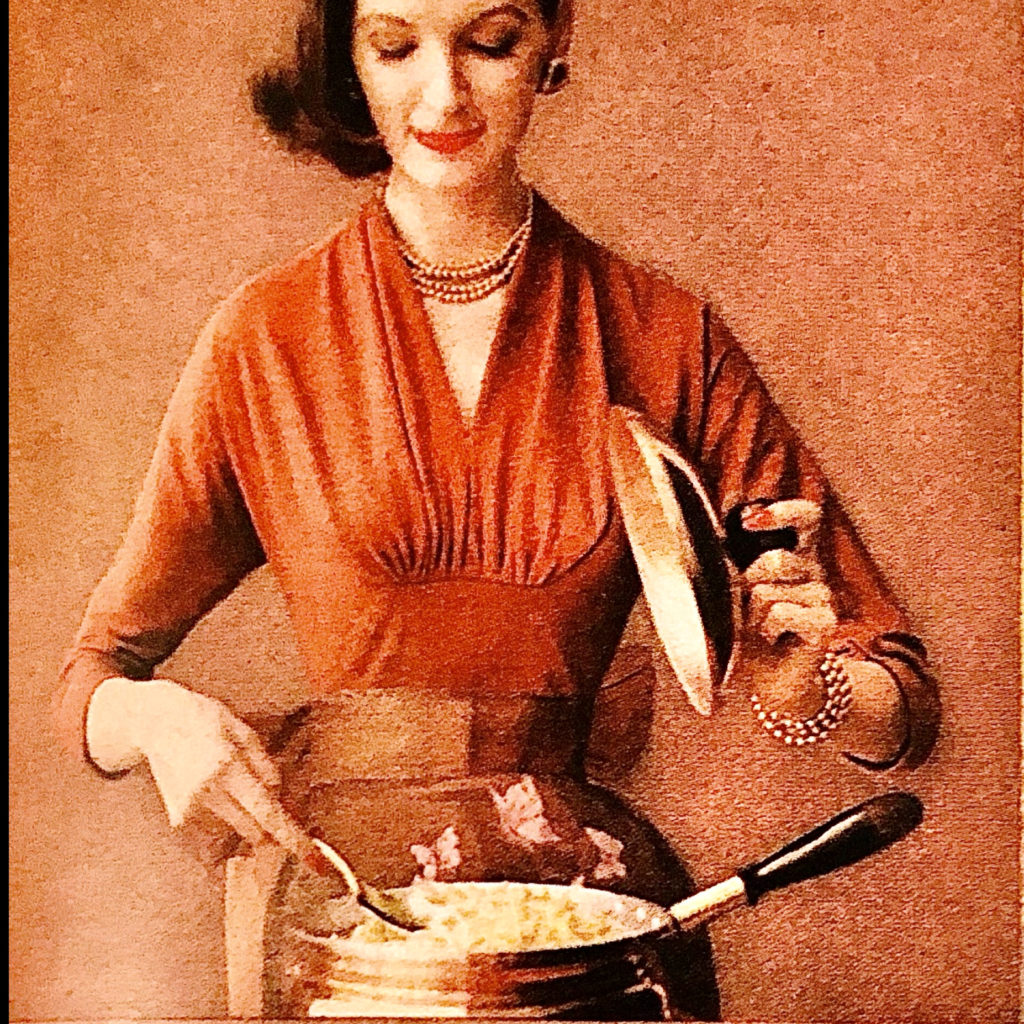
I have many romantic attachments to the chafing dish. My father used to make crepes suzette and other fancy gourmet meals in a copper chafing dish. I just adored watching him cook. When I lived on my own, that copper chafing dish came with me and I loved to prepare date night meals in it, (I swear all my dating moves could be boiled down to “late 1930’s bachelor”). In the next segment we’ll look at how the chafing dish is used and it’s etiquette.

I hope everyone is happy and healthy. Sending you much love, Cheri
